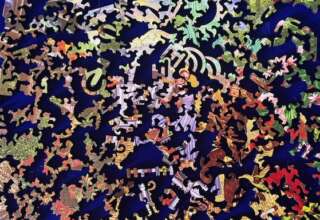
As Christakis notes, the psychogenic illnesses are often referred to as “hysteria.” The history of “hysteria”, in turn, goes back many centuries and has been of great importance in the creation of modern mental health practices (Zilboorg, 1967)—as well as being the precipitator for many witch hunts in many countries over the years. What is perhaps most important to note about hysteria (psychogenic illness) is that it is quite elusive regarding both diagnosis and treatment. The source of this malady is not easily identified, and many strange treatments have been engaged over the years – with a few of them, like Sigmund Freud’s “talking cure” being somewhat successful. Given its elusive nature, hysteria is often the source of major fear and creator of many superstitious and wildly inaccurate medical diagnoses (beginning with the assumption that “hysteria” is caused by the wandering of a woman’s womb).
It seems that COVID-19 is equally elusive, scary and a source of many distorted and wildly inaccurate diagnoses. As in the case of many “spooky” diseases, COVID-19 has often been ascribed to bats (it is not just Dracula who is a bad actor). As Christakis (2020, p. 21) notes, bats “have haunted our species . . . for a very long time as objects of mythology associated with death.” It is all about bats, demons, potions and even conspiracy theories. We regress under conditions of stress and are amendable to a variety of fanciful (and often destructive) images and action. There is an important unconscious dynamic associated with any pandemic that leads to the regressive ways in which we think about the pandemic and the regressive (often authoritarian) way in which societies over the centuries have confronted a pandemic (be it the plague or COVID-19).
While he is not a psychologist, Christakis (2020, p. 103) does probe the inner working of the human psyche and its irrational reactions to “scary” (fear-inducing) threats. He writes about the epidemic of fear:
In addition to grief, epidemics also bring fear. Fear can itself be contagious, forming a kind of parallel epidemic. Contagions of germs, emotions, and behaviors can act independently or they can intersect. And fear has an advantage over even the most contagious pathogens—people can contract a disease only through contact other infected individuals, but they can contract fear through contact with either infected individuals or fearful ones.
America has often been the home of this epidemic of fear and the hysteria that often undergirds the spread of this epidemic. There have been many stories and analyses of mass hysterical events as the home of hysteria. There is the mad gasser of Mattoon (Illinois Library, 2021) and the noteworthy hysteria associated with the War of the World broadcasts of Orson Wells (Schwartz, 2015). A wonderful (and often disturbing) account of the hysterical dynamic and the impact of silo-based, self-confirming thought patterns can be found in the account by Leon Festinger and his colleague of a prophetic group that thought the world was coming to an end and they would be rescued by a flying saucer (Festinger, Riecken and Schachter (1956).
While every country can no doubt offer similar fanciful tales, there is something unique about the American culture and character that seems to be particularly amenable to hysteria and epidemics of fear. I wish to speculate regarding a couple of reasons for the higher levels of hysteria in the United States. Both reasons are related to deep, often unconscious processes that were to be found in the Puritan history and heritage. I begin with the repressive environment to be found in Puritan society. As was the case in the repressive environment of Freud’s Vienna (Rieff, 1979), there was a profound sense in the Puritan society that many natural human desires (such as sexuality) are sinful and that a strict code of conduct must be imposed on society if these natural desires (the temptation of sin) are to be controlled and hopefully conquered.









